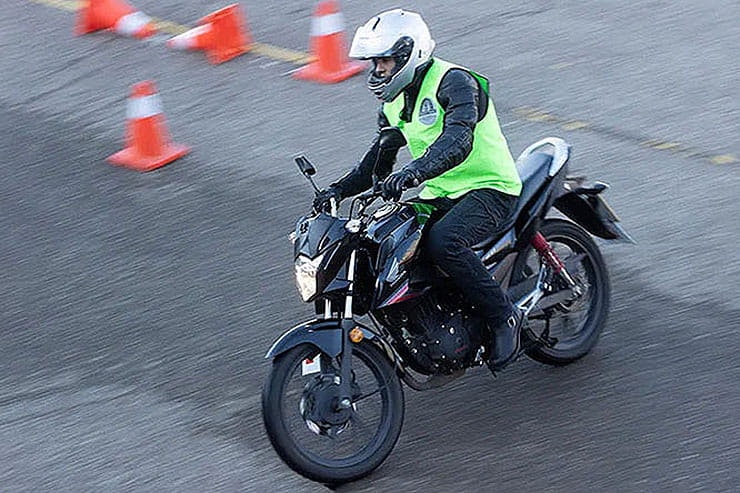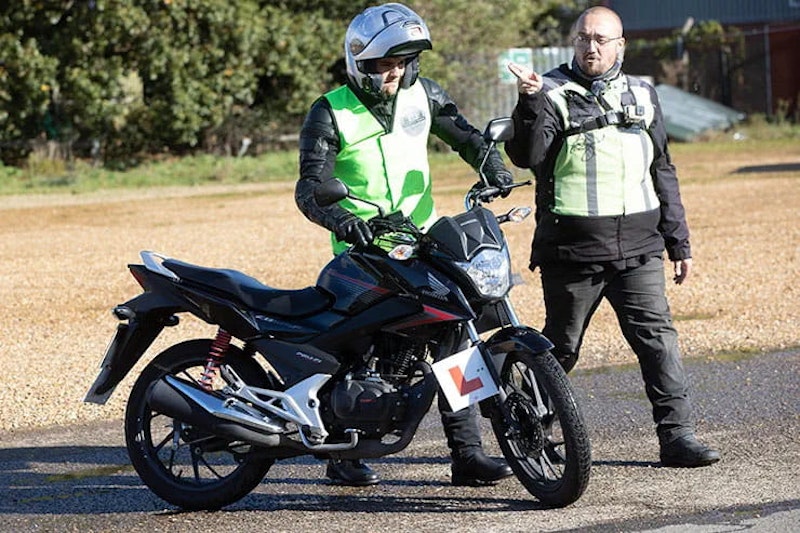Car drivers aren’t ready for tests – but riders buck the trend with record passes
By Ben Purvis
Motorcycle Journalist
15.08.2022
The Government is pushing for car drivers to wait until their ready before taking driving tests by highlighting the fact that more than half candidates fail – but figures for motorcycles show that we’re not part of the problem, with record numbers both taking and passing their tests.
Test centres are under pressure to accommodate the backlog of new road users looking for licences, so the Government is trying to encourage learners to wait until they’re truly ready for their test before booking. The DVSA has even revealed that in 20% of car driving tests the examiner has to intervene and take physical action to prevent an accident or dangerous incident.
Test centres have been working overtime to catch up on backlogs, with more examiners recruited and an estimated 135,000 additional test slots thanks to weekend and bank holiday tests being added. Now the Government has launched a new ‘Ready to Pass’ campaign to try to boost the pass rates and make sure time isn’t wasted testing candidates who are far from road-ready.
A new website includes checklists for new drivers and tips to help cut down on nerves as well as practical information about driving tests. While targeting car drivers who make up the vast majority of tests (and failures) the site might also be of use to new riders who face many of the same challenges – although the numbers show motorcyclists are much better-prepared anyway.
Figures for the number of motorcycle tests taken and passed both set new records over 2021-2022 as examiners tried to catch up on the pandemic-induced backlogs. Full figures for year from April 2021 to March 2022 show that 67,511 ‘module 2’ tests – the main, on-road part needed to get a licence – were conducted over that period, the most since the current two-part system was introduced in 2009. An impressive 72%, or 48,583, resulted in a pass. The previous record was set back in 2012/13 when 65,128 tests were conducted with 44,889 passes.
The number of tests each year fluctuates significantly but over the last decade it’s averaged around 50,000 per year, with a pass rate hovering around the 70% mark. During the height of the COVID-19 pandemic, in the 2020-2021 period, the number of tests plummeted to just 22,012 because test centres were closed to all but essential workers for much of that time. However, the bounce back to the new record figure shows that riders haven’t been put off entirely and – perhaps thanks to having more time to practise on L-plated bikes – the pass rate has risen a fraction compared to pre-pandemic averages.
The latest numbers show that, while numbers on both sides are rising, male riders still vastly outnumber females. Blokes accounted for 62,364 module 2 tests and 44,929 passes (72% pass rate), while only 5133 ladies took module 2, with 3643 passes (71% pass rate).
In line with past results, the figures for module 1 – the off-road test that demonstrates basic bike control skills, riding around cones, that has to be passed before the on-road module 2 can be taken – show a greater difference between the sexes. During the 2021-2022 period, 60,745 tests involved male candidates, with a 76.4% pass rate (46,395), while of the 6,600 female module 1 tests only 57.1% (3767) resulted in a pass.
As ever, though, riding a motorcycle shows a level of interest, experience and enthusiasm that isn’t replicated in many people trying to get a car licence. During the 2021-2022 period, more than 1.5 million car tests were conducted (1,538,314 to be precise), with a pass rate of just 48.9% (751,914). For the first three months of thus year, that’s dropped to 47.1% for car drivers, compared to 71.2% of motorcyclists passing the module 2 test in the same period. Part of the difference may come down to age, and the fact that many riders will already have a car licence before switching to two wheels. Although the latest figures are a year old, for the much-reduced tests in 2020/21, the largest group of new car drivers both taking passing their test at that state were unsurprisingly 17 years old (80,275 tests, 51,011 passes, for a rate of 63.5%). In contrast, the peak age for motorcycle tests is 24, with 1096 tests and 853 passes (77.8% pass rate), although 26-year-olds did best with a 78.4% pass rate.
Share on social media:

